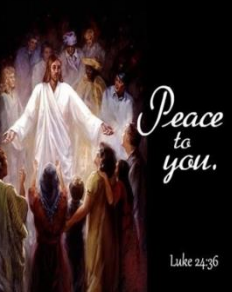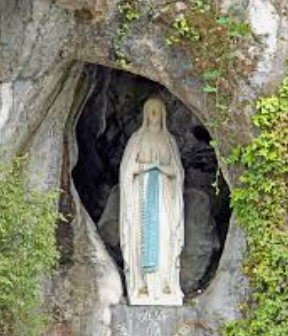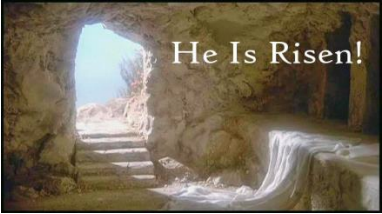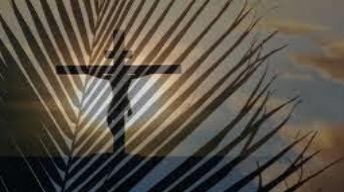








When I was 12, 1 wanted a Bible for Christmas—and received one of those beautiful, gilt-edged volumes with the wonderful aroma of aged leather. I was thrilled. Just holding it in my hands was a solemn experience.
My gift was an old English translation whose wording and phrasing could not by any stretch of the imagination be termed 20th-century modern.
Undaunted, I picked up my cherished gift, opened it to page 1, chapter 1, and began, resolving to read one chapter per day until I finished. This I did, completing the task two years and eleven months later.
This approach led to a neatly ordered concept of what the Bible contained, right? Not exactly. Had I known then what is obvious to me now, I could have saved myself a lot of confusion. I had plunged in, assuming I was about to read a book cover to cover, unaware that I was actually entering a library where not one, but 72 books awaited me: books of poetry, books of song, letters, allegories, historical sagas and more.
I had sailed blandly along treating them all alike under the impression that, no matter where you open it, the Bible is the Bible is the Bible. I know now that there are better ways to approach the Bible and to avoid that kind of pitfall.
Familiarity is the key. The more at home you feel in any library, the easier you’ll find your way around. If familiarity is the key, the door that it opens is literary form. With the type of book you’re reading clearly in mind, the door is wide open to pleasurable, profitable Scripture reading.
It’s helpful to know that the Old Testament is divided into four groups:
1) The Pentateuch
(Greek for five rolls or books), also known as the Torah
(Hebrew for the Law);
2) The Historical Books
;
3) The Wisdom Books
, or The Writings
;
4) The Prophetic Books
.
Knowing what we can expect to find within each of these groups puts us on firmer footing as we strive to find our way around the Old Testament.
Before we begin, we should remember that what Christians call the Old Testament is, in reality, the Hebrew Scriptures. The word “testament,” moreover, can also be interpreted as “covenant” (a solemn agreement between two parties). It is this notion of covenant, or the union between God and the Chosen People, that underlies the Hebrew Scriptures as a whole.
The Pentateuch
The Greek prefix penta means five (as in Washington’s Pentagon or Chrysler’s penta-star), so we are not surprised to find five books in this set: Genesis, Exodus, Leviticus, Numbers and Deuteronomy. These works are the heart of the Hebrew Scriptures and the most treasured traditions of Judaism.
Genesis. In the Pentateuch, we discover the very earliest memories in the Judaeo-Christian era. Genesis 1:1-11:26 contains stories so old they are subtitled Primeval or Prehistory, referring to that period predating written records. The tales told in these first Genesis chapters found their way by word of mouth from generation to generation for a very long time before being committed to writing.
Until recently. the books of the Pentateuch were ascribed to Moses, and certainly much that they contain is attributable to his influence. However, we really don’t know who the authors were. Thanks to modern biblical scholarship, we now recognize four distinct threads which were eventually woven into a single account. These four (Yahwist, Elohist, Priestly and Deuteronomic) probably reflect oral traditions as preserved in different geographic areas.
Since final work on the Pentateuch’s written version wasn’t completed until the sixth century B.C., it was difficult to reconcile divergent accounts of a specific episode into one. As a result, Genesis sets side-by-side two creation stories (Gn 1:1—2:4a and 2:4b—3:24) and merges two flood epics, one which speaks of saving two of every species (Gn 6:19) and one which calls for rescuing seven pairs (Gn 7:2-3). As Catholics, we do not take these prehistoric accounts literally although they richly convey God’s truth.
At Genesis 11:27, it’s as though the curtain has fallen on the prologue to the biblical drama and risen on Act One: the Age of the Patriarchs, an era which probably began in about the 19th century B.C. A patriarch was a father figure for an extended family or clan which included a multitude of servants or slaves needed to tend large herds and flocks. The constant need to feed and water these animals made life in the patriarchal system nomadic. The first historical biblical figure we meet is the leader of one of these family units. His name is Abram, later Abraham, and it is with him that the covenant relationship with God begins. The remainder of the Book of Genesis deals with the four generations of patriarchs: Abraham, Isaac, Esau and Jacob (later called Israel) and the 12 sons of Jacob, progenitors of the tribes of Israel. The focus is on Jacob’s favorite son, Joseph, through the latter part of this book. As Genesis ends, Joseph, together with his father, brothers and assorted relatives, are living a life of ease and comfort in Egypt’s Land of Goshen.
Exodus: Between the last lines of Genesis and the opening of the next book, Exodus, four centuries disappear and the situation of Jacob’s descendants is radically different. Now called lsraelites because all are from the line of Israel (Jacob), these Hebrew people are considered a threat to Egypt’s security and are virtually enslaved. In terms of its ongoing significance, the Book of Exodus is one of the most important in the Hebrew Scriptures.
Here Moses comes into his own, a mighty saga which is repeated annually in TV reruns of Cecil B. DeMille’s The Ten Commandments . The Hollywood version may be a little long on special effects and cast members, but it has the essentials reasonably well lined up. Exodus means departure, and it’s off into the desert for the Israelites. The high point of the book is Moses’ meeting with God atop Mount Sinai. It is there that the fullness of the Covenant is proposed, a relationship between the Chosen People and their God freely entered into in love and mutual respect. Once the people ratify God’s proposal, this Covenant with all its requirements becomes known as the Law, which would govern Israel religiously, socially and often politically for over a thousand years.
Leviticus: The law. The third volume of the Pentateuch, Leviticus, examines the Law in some detail—more detail, as a rule, than most readers are up to. As a result, Leviticus is rarely first choice for bedtime reading, but it does provide particulars necessary for a real understanding of this long-standing relationship between the people of God and their Lord.
Numbers: Counting heads. The Book of Numbers takes its name from two censuses, one in Chapter 1 and a second in Chapter 26. This book carries on the story of the Israelites’ sojourn in the Sinai Desert and can be considered an extension of the tale begun in Exodus.
Deuteronomy: The second law. Wherever you run into the prefix deutero in the Bible, it means second, so here, in the last book of the Pentateuch, we find a rehash of a lot of material already covered, but it’s done in a much different manner. The Law is gone over once more, this time in a series of discourses given by Moses as he appeals to the people to live up to the Covenant. As the book ends, the Promised Land (Canaan) is in view, Moses’ successor (Joshua) has been appointed, Moses delivers a farewell address (Chapters 32—33) and exits the biblical stage.
The Historical Books
Joshua: Journey’s end. Some say that with the Book of Joshua we enter the realm of the Bible’s historical books; others say that doesn’t happen until we reach the First Book of Samuel. Wherever he lands, Joshua is a historical figure and a prominent one. To him fall two heavy responsibilities: 1) to get the Israelites into the Promised Land and conquer such obstacles as lay in his path, and 2) to divide the newly occupied land among the tribes. God selected a very different leader from Moses for these vital tasks. Joshua was a military man, exactly what the times and situation called for.
Judges: But no courts. When we think of judges, the image is usually that of black-robed figures, gavels in hand, presiding over courtrooms. Upon opening the biblical Book of Judges, we must erase that image completely. These judges are the furthest thing from magistrates. They are charismatic leaders, often of a military nature, whose assignment is to get the Israelites out of one jam or another. Following the death of Joshua, there is no central authority over the tribes, no leader or governing body.
What remains is a loosely knit confederation of weak tribal units constantly preyed upon by their stronger neighbors. This cycle of being raided and invaded is God’s way of getting their attention after major breaches of the Covenant which more often than not had something to do with idolatry, the worship of false gods. Thus sin came and punishment followed. Having their backs to the wall frequently led to fervant repentance and prayers for relief. Help, according to this book, arrived in the form of a judge who took matters in hand (and the offending tribe as well) and whipped everything into shape. Among the more prominent were Deborah, Samson and Samuel.
Once the judge died or departed, the cycle began again. If nothing else, the Book of Judges is a forceful reminder of humanity’s tendency to learn little if anything from previous mistakes.
Ruth: An interlude. In symphonic concerts, after the orchestra has been working its way through some pretty ponderous pieces, the program may call for an interlude, a light and airy bit to give both musicians and audience a break. The four-chapter gem called the Book of Ruth is our interlude. It has almost a fairy-tale quality beginning “Once in the time of the judges…” (Ruth 1:1). Contrary to what was said earlier, this is bedtime reading, short and sweet, with a genuine heroine and better-than-average hero.
Samuel One and Two. If there was doubt before, none remains that we are at this point securely within the group known as the Historical Books. These books are historical largely because they deal with actual events. They are not, however, history books in the modern sense in which incidents are neatly logged in chronological order with all dates verified.
What we have in the Historical Books is salvation history, again the story of God, the Israelites and their ongoing endeavor to live out their Covenant. To that end, biblical writers included those episodes which served their purpose, downgraded or eliminated those that didn’t. Happenings which were considered of major importance sometimes appear several times.
The Historical Books, running from First Samuel through Second Maccabees, cover an awesome span of history, beginning at about 1020 B.C. and ending at around 142 B.C., nearly bumping up against the Christian era. Most helpful in our journey through them is a good biblical atlas, not just one or two all-purpose maps in the back of the Bible, but a full set showing changes in names, boundaries and political fortunes.
The two Books of Samuel were, in all probability, originally a single work and may be seen as transition books, wrapping up the period of the Judges and introducing the monarchy. Samuel himself plays a dual role: last of the Judges and a prophet as well. Though not a leader of all the tribes in the sense that Moses and Joshua were, Samuel nevertheless commands the respect of most tribal leaders, and it is to Samuel that they voice their desire for a king. Samuel reminds them that they already have a king, God, and that they live in a covenanted relationship with that monarch under the Law.
What the Israelite leaders really want is someone to fend off the pesky neighbours who have been disturbing the peace throughout the two centuries of the Judges. Samuel warns them they’ll live to regret their request, but he nonetheless anoints Saul as Israel’s first king, a reign that starts well, but ends badly, resulting in Samuel plodding off to Bethlehem to anoint the youngest of Jesse’s sons as Saul’s successor. And so the greatest of Israel’s kings mounts the throne—David, who will be revered through Jewish history as the king of the golden age. The remainder of the books of Samuel recount David’s colourful career.
Kings: One and Two. These books are the immediate successors to the books of Samuel. In fact, some older Bibles list all four volumes as First, Second, Third and Fourth Kings. History continues as the books open with David’s farewell address and death and continue with the anointing of one of his many sons, Solomon, as the next king.
Most of us have heard of Solomon’s wisdom and wealth. He has both in abundance (although his wisdom dims noticeably toward the end of his life). Solomon raises Israel to its period of greatest prominence in the Mediterranean world. He builds and builds and builds, but at great cost to his subjects, who pay for it through staggering taxes and conscripted labour. So, upon Solomon’s death, a delegation approaches his son, the new king, Rehoboam, begging relief.
Rehoboam, upon consultation with his advisors, takes what is probably the worst advice given in the entire Bible, telling the people that, if they think they had it tough under dear old dad, they haven’t seen anything yet. Whereupon, ten tribes do a little consulting of their own and decide, “Who needs this?” They straightway secede and establish a kingdom of their own in the north. Hereafter, there will remain two nations: Israel in the north and Judah in the south.
The remainder of the Books of Kings documents the times of the two nations and their ultimate downfall. Israel is conquered by superpower Assyria in 721 B.C., and most of its citizenry is relocated to other parts of the vast Assyrian Empire, never to return as tribal units, thus becoming known as the ten lost tribes . Judah lasts about a century and a half longer, only to fall into the hands of a later superpower, Babylonia, and most Judeans are marched into exile for some eighty years, ending the monarchy.
Chronicles: One more time. The Books of Chronicles essentially recap most of what you just read in Kings. They originate from a source which also gives us the next two books, Ezra and Nehemiah. The chronicler condenses the tale, adds a little more theology and includes the end of the Exile narrative.
Ezra and Nehemiah. Thus, Chronicles sets us up for the post-exilic period of Jewish history and points us right at Ezra and Nehemiah, where we learn about the return of the Judean exiles from Babylon and the rebuilding of their homeland. By this time, all tribal identities except that of Judah have been blurred or lost and the descendants of Israel come to be known by the name of that one tribe, Jews.
Tobit, Judith and Esther: A novel approach. At this point, we get another interlude, a little light reading and a break from all this heavy history. This interlude comes in the form of three relatively short historical novels: Tobit, Judith and Esther. Each is intriguing in its own way and good for bedtime reading, but if you’re all caught up in the historical events, you can skip right past them temporarily and move directly to the final volumes in this section.
First and Second Maccabees: The hammer strikes. Be prepared for another time warp. In First and Second Maccabees, the biblical writers have let something like three centuries slip away without comment and now direct our attention to a time not long before Jesus, the second century B.C. In these books, the Jews are confronted with an attempt to undermine or eliminate their culture, replacing it with the Greek (Hellenistic) traditions so popular in the Mediterranean world of that time. Even the beloved Temple is desecrated.
These books report the attempts of Judas Maccabaeus (the name means hammer ) and his brothers to regain religious and political freedom. Their success culminates in the glorious rededication of the Temple in a Feast of Light, celebrated today as Hanukkah.
The Wisdom Books or the Writings
The Wisdom Books or the Writings come from a type of literature common in the Near Eastern world in the centuries just before and after Jesus’ time. In them, Wisdom is often capitalized and personified and thereafter spoken of as a living being. Some of these books really are Wisdom Literature: Job, Proverbs, Ecclesiastes, Sirach and, of course, the Book of Wisdom (probably the final contribution to the Old Testament canon, written about 100 B.C. in Alexandria, Egypt).
Each approaches the topic from a different angle. Job ponders the mystery of why the good suffer. Proverbs compiles short axioms as norms for moral conduct (in effect, the Bible’s Poor Richard’s Almanac ). In Ecclesiastes , Qoheleth mourns the vanity of everything that is not God, concluding that only God lasts; everything else is transient. Sirach scoops up the wisdom of past centuries and encapsulates it. The Book of Wisdom is lyrical in its hope for immortality, the most forceful statement on belief in an afterlife found anywhere in the Old Testament (Wis 3—5).
The Song of Songs and the Psalms are strictly speaking not Wisdom literature. The first is an epic love poem, celebrating ideal love between woman and man, which is also seen as an allegory describing the love between God and the Israelites.
The Psalter, on the other hand, is a collection (actually five collections) of song lyrics. Many psalms were used in Temple worship, and the Psalter as it exists today is rather like a modern hymnal preserved with only the lyrics, the melodic line missing. The 150 psalms of the Bible were composed over some 500 years and are of a variety of types: praise, thanksgiving, lamentation, odes to the king and so on. It has been said that if all the Old Testament were lost to us and only the psalms remained, we would still have nearly all the essential history and theology of those 20 centuries.
The Prophetic Books
Most modern Bibles group the prophetic books at the end of the Hebrew Scriptures. They are divided into the major prophets and minor prophets . The major prophets ( Isaiah, Jeremiah, Ezekiel, Daniel ) are listed first; major not because their messages are more important, but simply because they are lengthier. From Hosea through Malachi , 12 minor prophets’ writings, shorter in length, follow one-by-one.
The prophets in the two groups above are also known as the writing prophets. But Scripture also teems with prophets from whom we have not one written word: Elijah, Elisha, Nathan and so on.
The main role of the prophets was not to predict the future but to “speak for God” on the issues of the day. Hence prophets should be seen against a backdrop of the times and places in which they lived and worked. It is important, for instance, to read Jeremiah in relation to the events preceding the Exile as described in 2 Kings 25 and 2 Chronicles 36. Every prophet was a product of his time. His primary message to God’s people dealt with the current situation and that alone, so when interpreting the prophetic books for our benefit, we should first learn what the initial intent of that message was: What problems of his time was a particular prophet addressing?
Coming up for air. Our trip through the Hebrew Scriptures has been so rapid that it leaves us breathless. Even so, this little library of 45 books should be a bit more familiar and a bit less bewildering. Since, for Christians, the New Testament lies hidden in the Old, a season like Advent is a perfect time to leaf through the books we’ve talked about. During Advent, we live out a miniature version of the centuries of waiting for the fulfillment of the Covenant in the coming Messiah. So pick up your Hebrew Scriptures and dive in. You’ll be surprised how soon you’ll feel right at home.
Virginia Smith is cofounder of Scripture From Scratch, a Bible study program for adult Catholics (published by St. Anthony Messenger Press). She is also director of religious education for Holy Rosary Parish in Billings, Montana, and chairs the religion department at Billings Central Catholic High School.








